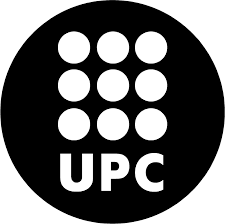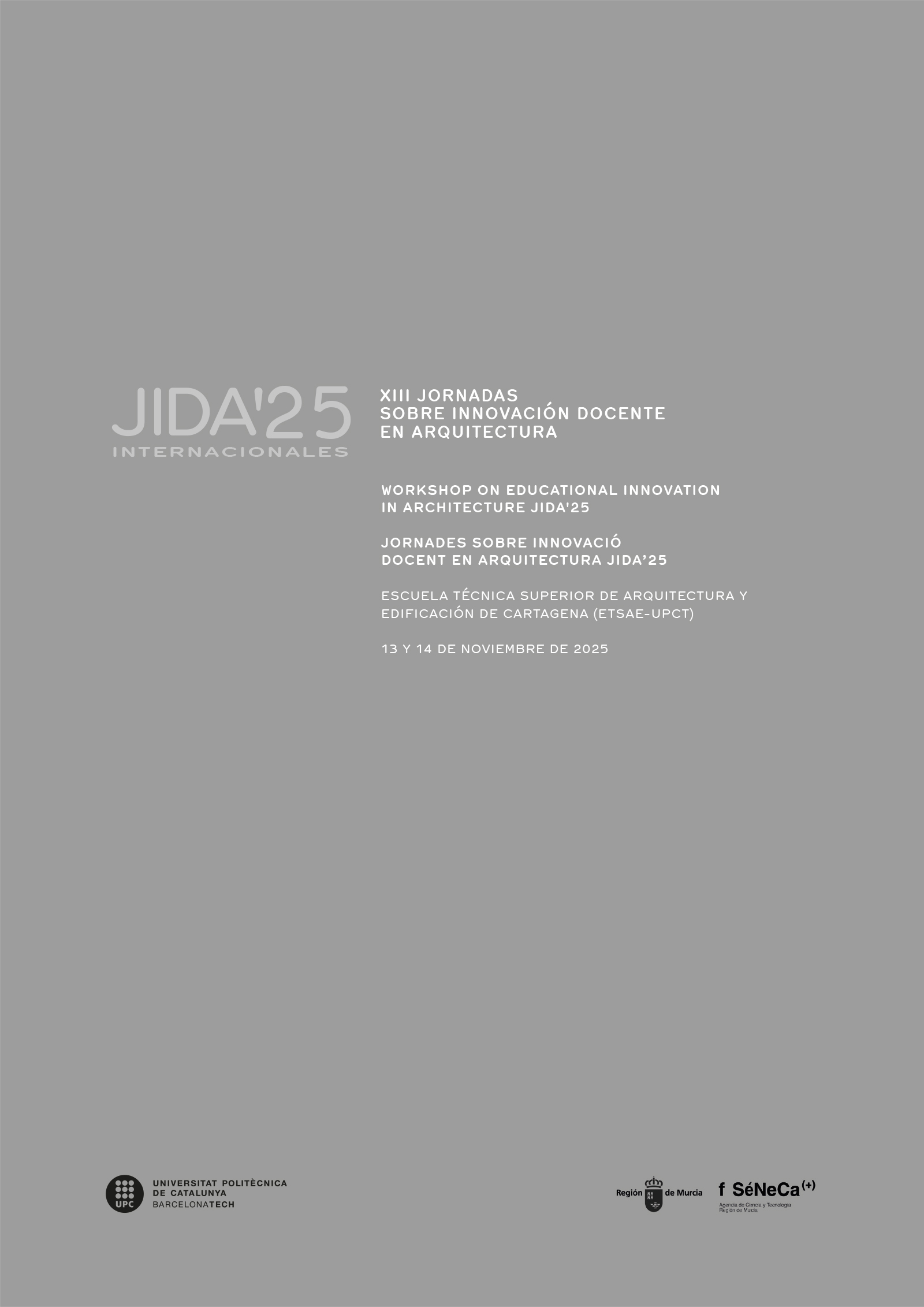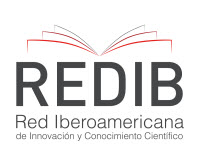Research and development of architectural projects through immersive environments
DOI:
https://doi.org/10.5821/jida.2025.13599Keywords:
inmersive learning, augmented reality, design education, mobile learning, transdisciplinary collaborationAbstract
The research proposes the incorporation of immersive and interactive models into the different phases of the architectural project development from a practical application perspective. In our case, the integration takes place in early stages of architectural learning, observing aspects that represent an advance in the knowledge of architectural systems; developing, additionally, ways to experience the process of creating an architectural project through a research based on the use of immersive tools. From an academic perspective, the model proposes the evolution towards the creation of virtual design studios, where students’ access projects asynchronously. A flexible and accessible, working and researching platform, where students have the possibility to work with models, visit spaces, and modify projects through collaborative files. The proposal concludes with the speculation of future experiences, close to the metaverse, that complement the traditional classroom.
References
Das, Avishek, Camilla Brunsgaard y Claus Brøndgaard Madsen. 2022. «Understanding the AR-VR Based Architectural Design Workflow among Selected Danish Architecture Practices». eCAADe 40 - Volume 1 - Co-creating the Future. 381-388.
Darwish, Mohamed & Kamel, Shaimaa & Assem, Ayman. 2023. «Extended reality for enhancing spatial ability in architecture design education». Ain Shams Engineering Journal. Vol. (14), 1-13. doi: 10.1016/j.asej.2022.102104.
Fröst, Peter y Peter Warren, P. 2000. «Virtual Reality Used in a Collaborative Architectural Design Process». 2000 IEEE International Conference on Information Visualization, 568-573.
Kataoka, M. 2025. «With Love, What Kind of a World Can Machines and Humans Create?» Machine Love: Video Game, Al and Contemporary Art, 25-36. Tokio: Mori Art Museum.
Krüger, Jule M., Alexander Buchholz y Daniel Bodemer. 2019. «Augmented Reality in Education: Three Unique Characteristics from a User’s Perspective». Proceedings of the 27th International Conference on Computers in Education, 412-422. Asia-Pacific Society for Computers in Education.
Hunicke, Robin, Marc LeBlanc y Robert Zubek. 2004. «MDA: A Formal Approach to Game Design and Game Research». 19th National Conference of Artificial Intelligence. AAAI Workshop - Technical Report. 1.
Schnabel, Marc Aurel, Sky Lo Tian Tian y Serdar Aydin. 2014. «Gamification and Rule Based Design Strategies in Architecture Education». DesignED Asia Conference 2014. doi: 10.13140/2.1.5150.3689.
Sørensen, S. 2006. «The development of Augmented Reality as a tool in Architectural and Urban design». Nordic journal of architectural research, Vol. (19): n. º 4, 25-32.
Shihab, Sk Rezwan, Nahida Sultana y Abdul Samad. 2023 «Pedagogy designing with augmented reality: a paradigm shift in educational approaches». Injuruty: Interdiciplinary Journal and Humanity, Vol. (2): n. º 11, 872-898. doi: 10.58631/injurity.v2i11.136






















